 At Pompeii with a placid looking Vesuvius in the background
At Pompeii with a placid looking Vesuvius in the background
Today, I dedicate my blog post to my dear brother-in-law, Dave Hanley, he being the history officianado in our family. Two of his favorite people, Pliny the Elder and Pliny the Younger, figure prominently in the history of Pompeii. History notes that a surviving letter by Pliny the Younger describes his eye witness account of the destruction from the famous eruption. He apparently witnessed the eruption from a safe distance and described the death of his uncle Pliny the Elder, an admiral of the Roman fleet, who tried to rescue citizens.
I’d be remiss in excluding the visit to Pompeii we made upon leaving Positano. Christiano’s Dad drove us from Positano and waited for us to make the “quick” tour of Pompeii before depositing us at the Naples airport. Again, it was the most beautiful day and made our wanderings at the site most enjoyable. I confess that after an hour and a half of walking through the ruins I was anxious to move on, but I am glad we went because we saw some amazing and beautiful places and remains.
At Pompeii:
This collection of photos hardly does a visit to Pompeii any justice. I confess I became very hungry and rushed myself out of the grounds to have lunch. George went on – I should have given him the camera – to see more. Alas, I don’t have a complete compendium of photos from this visit – so, I’ll just have to go back. Lots of people take the 6 hour tour of Pompeii – I am not sure if I could do this, but surely, more than an hour and a half is in order.
In reflecting on what I saw here I am again reminded of how foolish it is to think that we are so sophisticated here and now in 2013. The thousands of people who built this city and the level of sophistication evident here after being destroyed and buried under 21′ of ash in 79 AD is astounding. A wonderful visit and reminder of the greatness of society in this little outpost of Naples and Vesuvius way back when. It is estimated that Pompeii was founded around the 7th or 6th century BC, conquered by the Romans in 80 BC and, at the time of the eruption, the population probably around 20,000 people. It is said that the town was lost for approximately 1500 years when it was discovered first in 1599 and the more definitive excavation beginning in 1748 by the Spanish explorer Joaquin de Alcubierre.
This was a beautiful, albeit too short visit. It is awesome to see the remains, especially on such a sparkling day. I will look forward to my next visit and a more in-depth tour.
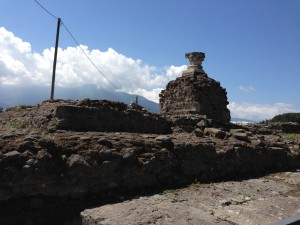
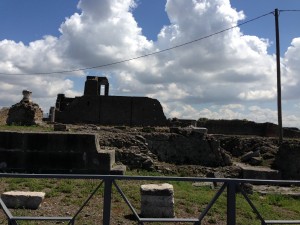
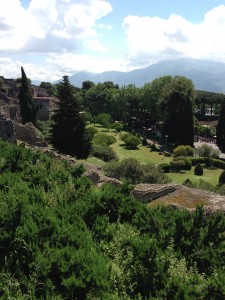
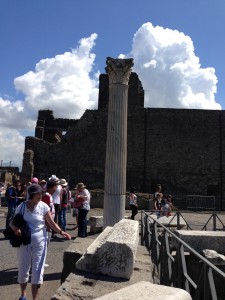
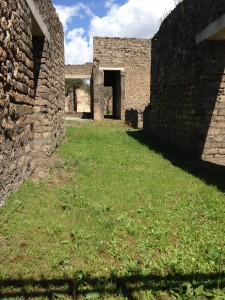
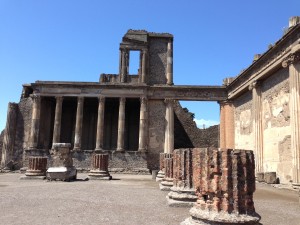
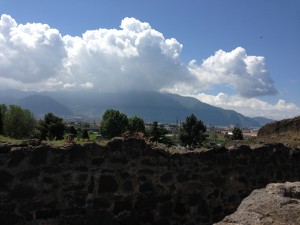
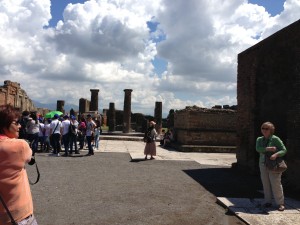
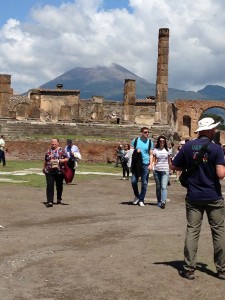

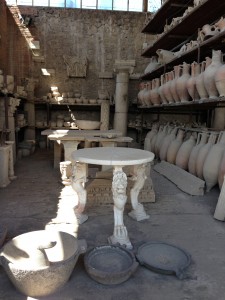
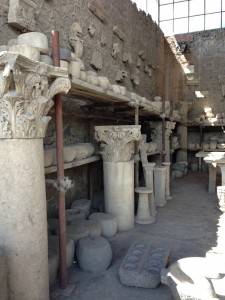
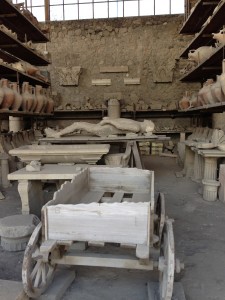
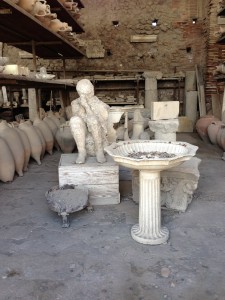
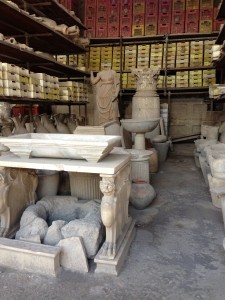
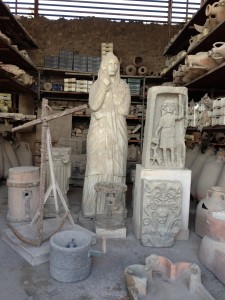
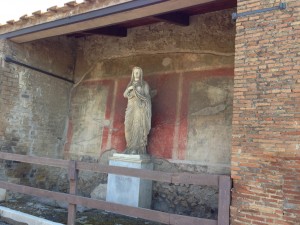


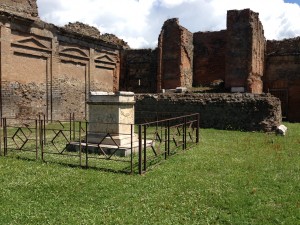
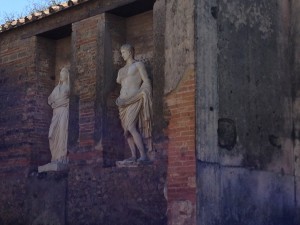

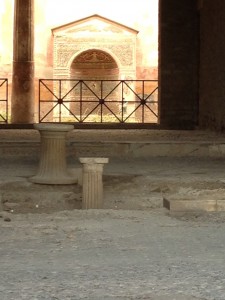
Looks like it was a splendid trip, Marianne. So fun making new memories!
Yes and ready to return anytime!